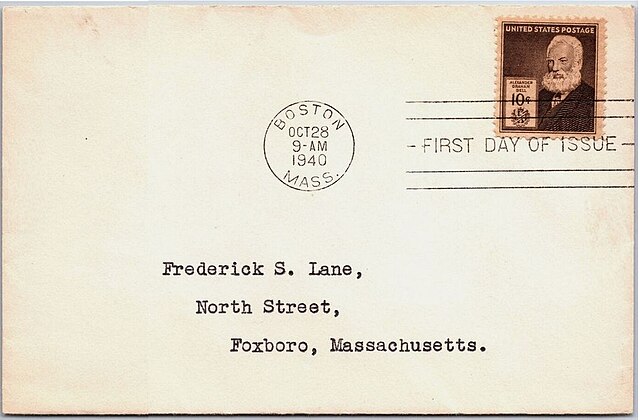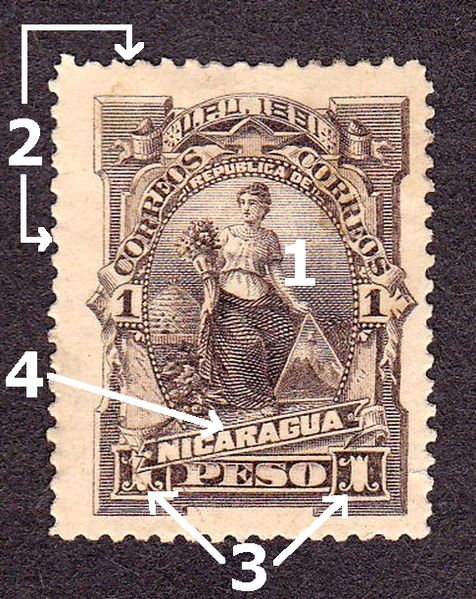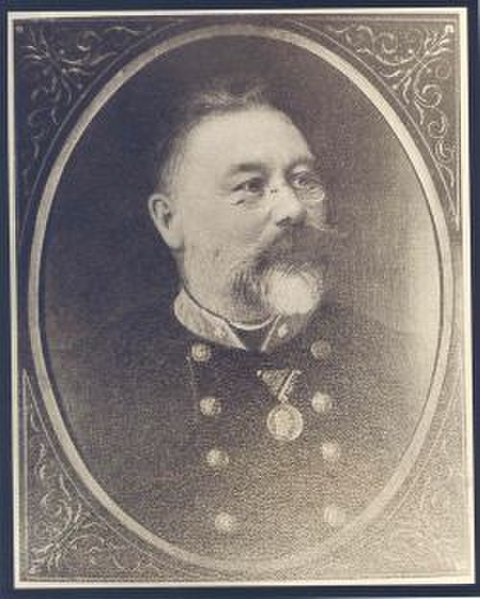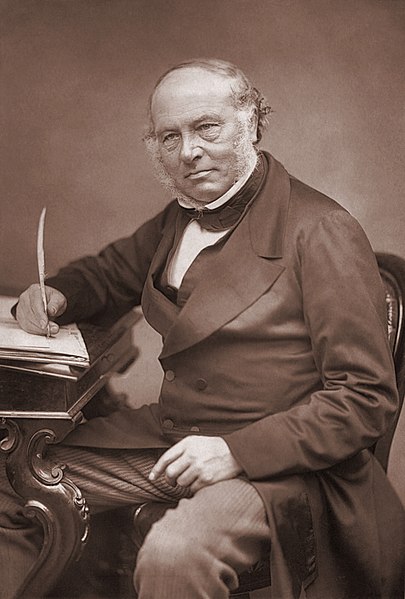A first day of issue cover or first day cover (FDC) is a postage stamp on a cover, postal card or stamped envelope franked on the first day the issue is authorized for use within the country or territory of the stamp-issuing authority. Sometimes the issue is made from a temporary or permanent foreign or overseas office. Covers that are postmarked at sea or their next port of call will carry a Paquebot postmark. There will usually be a first day of issue postmark, frequently a pictorial cancellation, indicating the city and date where the item was first issued, and "first day of issue" is often used to refer to this postmark. Depending on the policy of the nation issuing the stamp, official first day postmarks may sometimes be applied to covers weeks or months after the date indicated.
First day cover of the Alexander Graham Bell issue of 1940
First day cover of the world's first postage stamp, the Penny Black, used on May 6, 1840 is verified by the datestamp on the backflap
Soviet Union first day cover for the event of the 1965 Bandy World Championship, that has an arrival backstamp.
1963 Centenary of the Red Cross cover with West Wellow postmark - where Florence Nightingale was buried
A postage stamp is a small piece of paper issued by a post office, postal administration, or other authorized vendors to customers who pay postage. Then the stamp is affixed to the face or address-side of any item of mail—an envelope or other postal cover —which they wish to send. The item is then processed by the postal system, where a postmark or cancellation mark—in modern usage indicating date and point of origin of mailing—is applied to the stamp and its left and right sides to prevent its reuse. Next the item is delivered to its addressee.
The main components of a stamp: 1. Image 2. Perforations 3. Denomination 4. Country name
Lovrenc Košir, 1870s
Rowland Hill
The Penny Black, the world's first postage stamp (1 May 1840)








